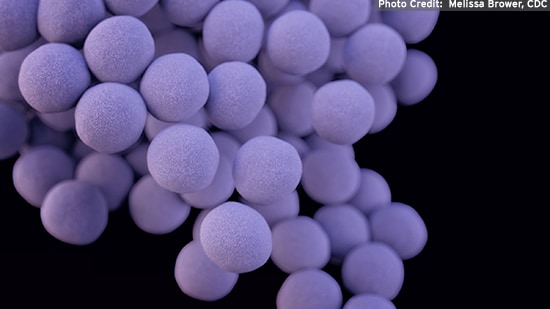
Staph. aureus foodborne
WHAT IS STAPH. AUREUS FOODBORNE?
Staphylococcus aureus is a common cause of foodborne illness that is not covered in some epidemiologic surveillance programmes. Some strains of Staphylococcus aureus cause staphylococcal food poisoning through production of heat-stable staphylococcal toxins. All people are believed to be susceptible to this type of bacterial intoxication. However, the intensity of the symptoms may vary related to the amount of contaminated food ingested and susceptibility of the individual to the toxin.
WHAT ARE THE SYMPTOMS?
Onset of staphylococcal food poisoning symptoms ranges from 30 minutes to seven hours (the mean is two to four hours) after consumption of foods containing pre-formed toxins. Nausea, vomiting, abdominal cramps, prostration and diarrhea are common symptoms. Recovery usually takes about two days.
Staphylococcus aureus is also responsible for skin abscesses, pneumonia, bacteremia, endocarditis and toxic shock syndrome. These infections are not due to a foodborne source and typically require treatment with antibiotics and hospitalization.
HOW IS IT TRANSMITTED?
Staphylococcus aureus is a common bacterium found on the skin and in the noses of up to 50 percent of healthy people and animals. Staph. aureus does not compete well with other organisms, so outbreaks are not usually associated with raw products where high numbers of other bacteria are present. The exception may be milk from mastitic cows, as Staph. aureus is a cause of mastitis.
Typical foods associated with Staph. aureus outbreaks include high-protein products that are handled during processing or preparation.
- Fermented meats and cheese may be implicated when fermentation does not proceed rapidly, although this is rare when commercial culture concentrates are used.
- Cream-filled bakery products are sometimes affected, since they are handled during introduction of the cream filling, and because the higher sugar content may inhibit growth of other organisms.
- Cooked poultry, egg and seafood products that are handled during preparation or are stored at improper temperatures prior to consumption have also been implicated in Staph. aureus outbreaks.
- Dry pasta has been involved in outbreaks, as the dry dough is typically extruded at warm temperatures that are conducive to growth of Staph. aureus, and because equipment is difficult to clean.
The toxins produced by Staph. aureus are very heat stable. For example, even canned mushrooms have caused outbreaks. The mushrooms were stored in a brine solution when harvested, which inhibited growth of competitive flora. Toxin formed during storage prior to canning and remained active even after the canning process.
HOW IS IT CONTROLLED?
Time and temperature control to prevent the growth of the organism is the primary control measure for Staph. aureus. Products can be formulated to prevent growth as well. Personal hygiene is also important to help prevent product contamination from food handlers. It is important to note that heating food after toxin is formed will not be an effective control.
Temperature, pH and water activity limits for growth are broader than those for toxin production, and anaerobic conditions (lack of oxygen) restricts toxin production further. For example, Staph. aureus can grow in the range of 7 – 48°C, and toxin is produced from 10 – 48°C. The minimum water activity for growth is 0.83 aerobically and 0.90 anaerobically, while toxin is limited aerobically at 0.87 and anaerobically at 0.92. The pH range for growth is 4 – 10, while the lower toxin production limit is 4.5 aerobically and 5.0 anaerobically (International Commission on Microbiological Specifications of Foods, 1996).
For assistance with this topic or other food safety questions for your operation, please Contact Us.
REFERENCES AND FURTHER INFORMATION


